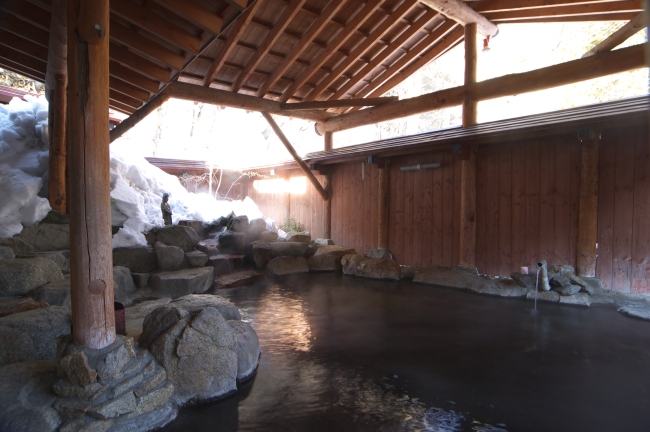Although a simple everyday act, bathing, in some cultures has greater meaning.
Some travelers say that exploring different bathing cultures around the world is a must, as it is a way to learn more about the countries through the experience.
Among different cultures, there is a wide variety of traditional themes, rituals, and customs associated with bathing. The diversity is a reflection of cultural, historical differences.
Here is a list of bathing cultures around the globe that show that bathing is about more than simply cleansing oneself.
Russian bathhouse banya
Banyas are traditional Russian bathhouses known for their rooms for dry and wet heat sessions.
Inspired by Finnish cottage saunas, Russian banyas usually have three distinct sections/rooms: an entrance room, a washing room and a steam room.
Visitors enter the banya through the entrance room, where there are benches and knobs to hang clothes. In the washing room, hot water heated by the steam room stove and cold tap water are mixed in the stove to create the perfect temperature for bathing.
The mechanics of the stove in the banyas are what make them so special. In a banya stove, there are three chambers, a fire box that is connected to the entrance room, a rock chamber, and a water tank on top of the rock chamber.
In the steam room, it is traditional to swat one’s back with a leafy branch called a “venik.” It is known to improve blood circulation and smooth one’s back. Many bathers wear felt hats to protect their hair and maintain a high body temperature.
After steaming themselves and washing the sweat off, visitors usually go to a restaurant in the banya.
Japanese onsen
Some travelers say that exploring different bathing cultures around the world is a must, as it is a way to learn more about the countries through the experience.
Among different cultures, there is a wide variety of traditional themes, rituals, and customs associated with bathing. The diversity is a reflection of cultural, historical differences.
Here is a list of bathing cultures around the globe that show that bathing is about more than simply cleansing oneself.
Russian bathhouse banya
Banyas are traditional Russian bathhouses known for their rooms for dry and wet heat sessions.
Inspired by Finnish cottage saunas, Russian banyas usually have three distinct sections/rooms: an entrance room, a washing room and a steam room.
Visitors enter the banya through the entrance room, where there are benches and knobs to hang clothes. In the washing room, hot water heated by the steam room stove and cold tap water are mixed in the stove to create the perfect temperature for bathing.
The mechanics of the stove in the banyas are what make them so special. In a banya stove, there are three chambers, a fire box that is connected to the entrance room, a rock chamber, and a water tank on top of the rock chamber.
In the steam room, it is traditional to swat one’s back with a leafy branch called a “venik.” It is known to improve blood circulation and smooth one’s back. Many bathers wear felt hats to protect their hair and maintain a high body temperature.
After steaming themselves and washing the sweat off, visitors usually go to a restaurant in the banya.
Japanese onsen

Widely known throughout the world, a Japanese onsen is the ultimate place for pleasure and leisure.
Both indoors and outdoors, Japanese hot springs are geothermally heated by volcanoes, attracting many visitors and tourists from around the world looking to experience their natural touch.
In the old days, men and women used the same baths. However, a law that bans men and women from bathing in the same area in a public bath was promulgated after the Meiji Restoration, and onsens now have separate areas for men and women.
Guests are required to fully wash and rinse their bodies before entering any hot bath or tub in the washroom.
Since the baths are gender separated, guests cannot wear swimsuits. However, at some onsens where mixed-sex bathing is available, guests must wear swimsuits specifically designed for bathing.
The history of onsens in Japan is known to date back to 712. Buddhist bathing rituals popularized the baths and many onsen are thought to have been founded by Buddhist monks. Since then, interest in bathing has only grown even more as it became associated with health benefits.
Turkish bath hammam
Hammams, also known as Turkish baths, are a type of bathhouse and bathing style popular during the Victorian-era in the British empire, Western Europe and the Islamic world.
Visitors first enter a heated room full of hot dry air to sweat off toxins and relax in the warmth. Next, they may enter different temperature rooms depending on their personal tolerance for heat. Afterwards, they wash off with cold water before entering the common cooling room to recover from the heat.
In Muslim countries, women often use hammams to socialize and express one’s personality freely without male judgment or bias.
Hammams stemmed from purification rituals mandated by Islam. In the Five Pillars of Islam prayer, ablutions are perform before praying. There are two types of ablution -- ghusl, a full-body wash, and wudu, a simple cleaning of the limbs. The idea of bathing in Islam prompted the popularity of hammams and eventually led to the establishment of an intricate cultural experience.
By Nadine Lee
Intern Reporter (nadine@heraldcorp.com)
-
Articles by Korea Herald








![[Graphic News] More Koreans say they plan long-distance trips this year](http://res.heraldm.com/phpwas/restmb_idxmake.php?idx=644&simg=/content/image/2024/04/17/20240417050828_0.gif&u=)
![[KH Explains] Hyundai's full hybrid edge to pay off amid slow transition to pure EVs](http://res.heraldm.com/phpwas/restmb_idxmake.php?idx=644&simg=/content/image/2024/04/18/20240418050645_0.jpg&u=20240419100350)






![[From the Scene] Monks, Buddhists hail return of remains of Buddhas](http://res.heraldm.com/phpwas/restmb_idxmake.php?idx=652&simg=/content/image/2024/04/19/20240419050617_0.jpg&u=20240419175937)

![[KH Explains] Hyundai's full hybrid edge to pay off amid slow transition to pure EVs](http://res.heraldm.com/phpwas/restmb_idxmake.php?idx=652&simg=/content/image/2024/04/18/20240418050645_0.jpg&u=20240419100350)

![[Today’s K-pop] Illit drops debut single remix](http://res.heraldm.com/phpwas/restmb_idxmake.php?idx=642&simg=/content/image/2024/04/19/20240419050612_0.jpg&u=)